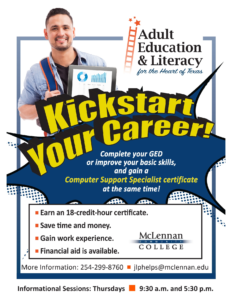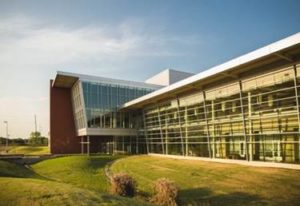By Janet Phelps
It can take years for a student to get a GED and finish college. Take, Patty*, for example, who started studying for her GED® in 2014 after dropping out of the 10th grade many years earlier because of a tough situation at home.
Patty completed her GED® just eight months later but continued to work minimum wage factory jobs to support her kids as a single mom.
Last fall, Patty took a CNA class and got a full-time job. She leveraged her newfound stability to take a FastTrack to College class, and then started classes toward her nursing degree at McLennan Community College this spring.
That should be the happy ending to Patty’s story— but it’s not.
She still has to complete her remedial class requirements at MCC while working full-time and struggling to make ends meet. She’s years away from that salaried job she desperately needs.
The length of time it takes people in Patty’s situation to first attain a GED, then complete remedial classes (which don’t typically count toward a degree), and THEN complete classes for a degree is often just too much. Many students drop out along the way. For many, the path is too long to be practical – too many things can go wrong along the way.
MCC is starting a program this spring through a grant from the Higher Education Coordinating Board to help students like Patty achieve their goals. This new Career Pathway option will allow students who dropped out of high school, or who need academic helps to be successful in college, to begin earning college credit more quickly.
Classes begin in May for the first pathway which will result in a Computer Support Specialist Certificate.
The program is designed for students to finish six courses (18 credit hours) and complete their GEDs® in two semesters (Summer and Fall) —bypassing the remedial courses that most students have to take when they start at MCC. Participating students will also get the chance to work toward achieving a work readiness certificate during the class.
Students will be able to go to work immediately when the courses finish in December, and the 18 hours of college credit they earn will also give them a good start toward earning a one or two-year degree in one of five areas at MCC: Computer Information Systems and Applications, Computer Applications, Paralegal, Administrative Assistant and Medical Office Assistant.
MCC’s Adult Education & Literacy Department also plans to partner with Communities in Schools (CIS) to provide paid work experience for students in this program who meet CIS’s eligibility requirements.
MCC is seeking to enroll 15 students without a GED® or high school diploma into this program. If qualified and accepted, MCC will pay for a student’s credit classes until the student demonstrates the success that’s required to qualify for federal financial aid (See: Ability to Benefit). The program is also open to students who have a high school diploma but who need academic remediation or English language help in college. Students who enroll will get academic and social support plus financial help with textbooks and supplies in addition to free tuition at MCC and free GED education.
The Computer Support Specialist certificate is part of the goal of MCC’s Adult Education & Literacy Department to boost the academic and career skills that low-income adults need to get ahead.
Please help us get the word out about this opportunity. To learn more, feel free to contact me. My email is [email protected]. Or, you can call 254-299-8760 or come to an informational session on Thursdays at 9:30 a.m. or 5:30 p.m. on MCC campus.
Computer Support Specialist Certificate Career Pathway
May – December 2016
Career Pathway Informational Sessions
Thursdays at 9:30 a.m. and 5:30 p.m.
Room E224, Community Services Center
McLennan Community College
For more information Contact Janet Phelps: [email protected]
 Janet Phelps is the Transition Specialist for Adult Education and Literacy for the Heart of Texas at McLennan Community College. She loves helping students, reading, and running at Cameron Park.
Janet Phelps is the Transition Specialist for Adult Education and Literacy for the Heart of Texas at McLennan Community College. She loves helping students, reading, and running at Cameron Park.
The Act Locally Waco blog publishes posts with a connection to these aspirations for Waco. If you are interested in writing for the Act Locally Waco Blog, please email [email protected] for more information.
*Patty is not the student’s real name. We used a pseudonym to protect this student’s privacy.
By Amy Grace
March is Red Cross month! That time of year in which we—along with community leaders, partners and volunteers—recognize how the American Red Cross helps people down the street, across the country and around the world.
As we wrap up the month, I wanted to share how the Red Cross is helping our local community in very practical ways that most people never even hear about.
 In 2015, the Red Cross responded to 85 McLennan County families who lost possessions, pets, clothes and, in some cases, their entire home to a fire, flood or tornado. Our incredible team of volunteers and staff deploy to help any family in our community devastated by disaster, no matter the nationality, ethnicity, income level or even citizenship of the victims…we provide relief. Period. And we are on call to respond 24/7, 365 days a year without question, right here in Waco.
In 2015, the Red Cross responded to 85 McLennan County families who lost possessions, pets, clothes and, in some cases, their entire home to a fire, flood or tornado. Our incredible team of volunteers and staff deploy to help any family in our community devastated by disaster, no matter the nationality, ethnicity, income level or even citizenship of the victims…we provide relief. Period. And we are on call to respond 24/7, 365 days a year without question, right here in Waco.
Additionally, throughout 2015, 1,861 McLennan county residents were trained to provide life-saving skills such as CPR, First Aid, Water Safety, Babysitting and more. That’s 1,861 more of us who are able to jump in and help save lives when needed, and that need could happen anywhere – restaurants, the grocery store, sports events – you just never know!
And lastly, did you know we have an entire arm of the Red Cross dedicated to serving and assisting our military, active and retired? Not only do we provide volunteer assistance to service members at local VA hospitals, but we also provide mental health services and reconnect military families across the globe who have been separated by war, tragedy or circumstance. In 2015, we provided assistance to military families and service members 262 times in McLennan County.
In other words, the Red Cross is here, supporting and providing relief in many ways to people in our own back yard every day. If you would like to join us in volunteering here in your own community, we would love to have you! Our volunteers are our life-blood, and we are proud of and grateful for every one of them! To register as a Red Cross volunteer, please visit www.redcross.org/volunteer. Enter your zip code and choose volunteer opportunities of interest, or if you don’t see something of interest in the listed opportunities, complete your profile anyway and call our office to talk about other volunteer options.
April 7 – Volunteer Teams of HOT American Red Cross Meeting – Naomi Dews, Volunteer Services Specialist and Trevor Sikes, Disaster Services Specialist will be discussing ways volunteers can provide relief to those affected by disasters and help people prevent, prepare for and respond to emergencies. Prospective volunteers are welcome to attend. Cost: FREE. Time: 6:30 PM. Location: 4224 Cobbs Drive. For more information, please call 254-523-4985 ext 1109 or email [email protected].
 Amy Grace is a native Texan and is serving our community as the Executive Director of the Heart of Texas chapter of the American Red Cross. She has an extensive professional background but is most proud of being a mom to her incredible four-year old daughter and paying forward a legacy of courage, resilience, hope and abundance. She currently resides in Temple with her daughter, two canine family members (Ranger and Silver) and her grandmother.
Amy Grace is a native Texan and is serving our community as the Executive Director of the Heart of Texas chapter of the American Red Cross. She has an extensive professional background but is most proud of being a mom to her incredible four-year old daughter and paying forward a legacy of courage, resilience, hope and abundance. She currently resides in Temple with her daughter, two canine family members (Ranger and Silver) and her grandmother.
The Act Locally Waco blog publishes posts with a connection to these aspirations for Waco. If you are interested in writing for the Act Locally Waco Blog, please email [email protected] for more information.
Amy Grace,
Executive Director
By David Saucedo
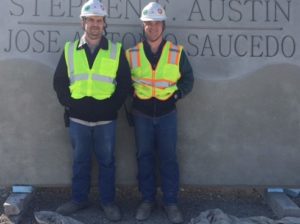 My brother, Robert Saucedo, and I have always had a desire to impact today’s culture. Between us, we have been blessed to work on many exciting projects that we believe are having a significant positive influence on the public, private and non-profit sectors in the Waco area. We didn’t know it, but we have been preparing for our newest project our whole lives. It’s called “Hope through Concrete.”
My brother, Robert Saucedo, and I have always had a desire to impact today’s culture. Between us, we have been blessed to work on many exciting projects that we believe are having a significant positive influence on the public, private and non-profit sectors in the Waco area. We didn’t know it, but we have been preparing for our newest project our whole lives. It’s called “Hope through Concrete.”
You might not immediately associate the words “Hope” and “Concrete,” but for my brother and I those two words fit together perfectly. Robert and I grew up working in concrete. We come from a family that has been involved in the concrete industry for over 40 years. Eventually we both landed careers in the precast concrete industry. Robert is a certified concrete technician and quality control supervisor; and I am a Safety Coordinator and training developer, also with industry certification. Now we are working to combine the skills and expertise we have developed working in the concrete industry with our desire to be a positive influence in the community.
We have started a concrete company, Saucedo Brothers, and are partnering with Life Church Waco, Pastor Gabriel Dominguez (Pastor Gabe), and the job creation/discipleship efforts of Hope Through Everything, a 501c3 Non-Profit here in Waco. The tagline of Hope Through Everything is “Moving Forward Despite our Struggles.” Here’s a part of the description from the website of what Hope Through Everything is working to do:
Hope Through Everything exists to disciple and provide jobs to those who are committed to God, are going through the systems established at “Life Church Waco,” and who are below the poverty line and/or who once were incarcerated or living the “street life” and are now choosing life change…
Our goal is to create jobs where this population can learn how to show up consistently and on time, handle responsibility, and gain employable skills in a safe and loving environment…
We do not want to provide jobs to just anyone because they need a job, but rather because they truly want one. We have healthy accountability systems already in place to ensure everyone we accept into our program is there because they want to be…
Robert and I agree with Pastor Gabe that people, especially young people, need an opportunity to learn fundamental work ethic and basic work skills. We vow to use our business to finance “Hope Through Concrete,” where young men and women seeking life change can find the guidance, training, spiritual growth and WORK they need to move forward despite their struggles. Our vision for “Hope Through Concrete” is a company that disciples young men and women as they learn the trade.
This approach is not only good for the young people who work for us, we think it makes good business sense. We call this concept “Foundational Employment.” Employers are in a good position to invest in employees in a way that helps employees build a solid foundation for their lives. Employers who are willing to make that investment will reap the benefit of high quality, loyal employees. We intend to run our company on that principle. As Robert says, “We believe companies would benefit by investing in the lives of their employees … sometimes it’s easier to show possibilities rather than preach them. The vision we have for our company is one of transparency and purpose, all employees at Saucedo Brothers will be invested in.”
 We are currently constructing a 6500 square foot parking lot and custom design retainer wall for the Masonic Temple at 724 Washington Avenue. Jon S. Spann, President of the board for the York Rite Library and Museum that owns the Masonic Temple, understands our vision, “The York Rite Library and Museum of Texas is dedicated to the preservation of the history of the York Rite, this includes The Masonic Temple building itself. We also seek out the opportunity to support local programs that benefit our community in and around the Waco area. Our faith is our guiding light in all that we do.”
We are currently constructing a 6500 square foot parking lot and custom design retainer wall for the Masonic Temple at 724 Washington Avenue. Jon S. Spann, President of the board for the York Rite Library and Museum that owns the Masonic Temple, understands our vision, “The York Rite Library and Museum of Texas is dedicated to the preservation of the history of the York Rite, this includes The Masonic Temple building itself. We also seek out the opportunity to support local programs that benefit our community in and around the Waco area. Our faith is our guiding light in all that we do.”
We are also already working with Cory and Kate Duncan. In a December 2015 article, the Waco Tribune said “Cory and Kate Duncan have been praised as the type of young, aggressive business owners that downtown Waco needs.” Cory, a real estate developer and Waco native, recently acquired nearly 14,000 square feet of space in the 700 block of Washington Avenue. Approximately 4,000 square feet of the development has been set-aside for Wildland Supply Co., a business founded and operated by his wife, Kate.
The Duncan’s admire the vision for Hope Through Everything and will be calling upon us for all of their concrete needs, including work on the renovation of their 1926 Cameron Park estate. As Cory says, “When exploring your options of contractors to use, you must look for the perfect balance of skill, experience, and price. The ability to support a good cause is icing on the cake. These guys are very transparent, very professional, and passionate about serving our community, we are excited about working with them on future projects.”
As Saucedo Brothers and Hope Through Concrete continue to work with developers and entrepreneurs like The Duncan’s, our vision is that the company’s reach will continue to spread Hope throughout the Waco area.
We need your help to grow! We can handle house foundations, building foundations, parking lots, custom designed retainer walls, sidewalks, patios, we love what we do and no job is too big or too small! Our business model is transparency. We will show you what it takes to get the job done, and explain what our aim is for a reasonable profit. We will provide testimonials about the lives impacted by your project. Visit www.hopethrougheverything.org and let us provide your concrete needs!
 This Act Locally Waco blog post was written by David Saucedo. David is a local minister with Life Church Waco and has committed the last 8 years of his life to impacting his community in a positive way. David has a loving wife, Michelle and three beautiful children, Lianna (7), Isaiah (4) and Isaac (10 Months).
This Act Locally Waco blog post was written by David Saucedo. David is a local minister with Life Church Waco and has committed the last 8 years of his life to impacting his community in a positive way. David has a loving wife, Michelle and three beautiful children, Lianna (7), Isaiah (4) and Isaac (10 Months).
The Act Locally Waco blog publishes posts with a connection to these aspirations for Waco. If you are interested in writing for the Act Locally Waco Blog, please email [email protected] for more information.
By Diego Loredo
College isn’t easy, trust me I know. I’ve been in college for two years and will be heading into my junior year this fall. I know the struggles of going to college. However, lately I’ve been hearing about a lot of my friends going back to Waco after spending a semester or two at a university out of town.
They either transfer to MCC or just stop going to college. Now there’s nothing wrong with going to MCC, my sister is going there this fall, but it surprises me that some of my friends decided to leave their university. I know they are all smart people and are perfectly capable of attending a university. When I asked them why, most of them said they just couldn’t handle going to a university away from home. I fully understand this and wrote this blog hoping to help them or anyone else who is struggling to adapt to a college away from home.
From personal experiences, I have gone through my fair share of struggles at UNT. I’ve bombed exams, met people I didn’t get along with, and I even failed a class last semester. I know there are many different reasons for college being tough such as, difficult classes, financial issues, homesickness, etc. But to me college is basically just learning through trial and error, and here are a few things I’ve learned that may help someone who is struggling in college.
Make a group of close friends
It always helps to have some friends you can rely on and this will make going to a college away from home much easier. I already had a few friends going to UNT, plus my roommate was a good high school friend of mine, but I thought I would still struggle to make new friends in college. However, I made friends almost instantly during my first week there and it turned into having my own little group of close friends. We always hang out and I know that I can rely on them to help me out with anything. Every college student needs a group like this and if you can find a few close friends then that’ll make the transition into college a lot smoother.
Don’t go home that often
I know this may be tempting but it’s best to not go home that often if you go to a college out of town. Unless, you have a specific reason that requires you to go home I think you should stay in the city that your college is in. Now this doesn’t mean don’t go home at all, I’m just saying don’t go home every weekend. If you do this, then you’ll never get used to being away from home. I know a few people who go home every weekend and I try to convince them to stay in Denton but they never do. There are so many things to experience in whatever city you’re in. You’ll be missing out on the full college experience if you’re back at home every weekend.
Find a tutor
For those who are struggling in classes, find a tutor! I know there’s some kind of learning center at your college. You’re paying for it so might as well use it right? Finding a tutor will not only help you in class, but it might even help you enjoy the class more. We all have those classes that we absolutely hated, for me it was Elementary Probability and Statistics, but having a tutor will help you get through it and not stress too much.
I’ll admit it, college isn’t for everyone. Some will enjoy it more than others and it can be absolutely nerve-wracking at times. But, you never know until you try. Going to a college away from home has been such a great experience so far and I highly recommend it to anyone who wants to go to college. I know it’s harder than staying at home but I promise it’s worth it.
 Diego Loredo is a sophomore at the University of North Texas. He is majoring in public relations. He graduated from University High School in 2014. Although he is still not quite sure what exactly he wants to do, he thinks he wants to work somewhere in sports PR (preferably soccer or college football). His hobbies include playing soccer and golf. He is 19 years old.
Diego Loredo is a sophomore at the University of North Texas. He is majoring in public relations. He graduated from University High School in 2014. Although he is still not quite sure what exactly he wants to do, he thinks he wants to work somewhere in sports PR (preferably soccer or college football). His hobbies include playing soccer and golf. He is 19 years old.
The Act Locally Waco blog publishes posts with a connection to these Aspirations for Waco. If you are interested in writing for the Act Locally Waco Blog, please email [email protected] for more information.
by John Fitch
If you were to conduct a survey about great cities for technology innovation it is unlikely that Waco would even make the list.
There actually is a list.
Waco is not on it.
One list to look at is the Streetwise Innovation Index . This index presents the top 50 cities for innovation in America by reviewing a number of factors: technology sectors represented, venture funding available, higher education enrollment, livability, and overall economy. Four cities in Texas were identified as providing the most promising climates for technology startups: San Antonio (8th), Houston (11th), Austin (12th), and Dallas (21st).
Looking at the five areas making up the index, we see that Waco holds the key elements already and is rapidly improving in each area.
Let’s start with an easy one – livability. Waco has clearly hit a critical mass in the past few years that is making a positive difference in livability. If you just compared the number of food trucks in Waco today versus 5 years ago that would be enough to settle the argument. But there is much more. A real resurgence downtown, the completion of the McLane stadium and it’s embracing of the river, Fixer Upper and the Silos, the Baylor Research Innovative Collaborative, Loft living, and so much more. Waco is not an Austin and probably never will be. But interestingly because of that critical mass, new graduates more and more are seeing Austin as a place to visit but Waco as a place to live and embrace community. This is one of the keys to technology startups – keeping young, energetic, bright minds engaged and locally involved.
The overall economy is also a key factor for the list. In general terms, the economy of Waco is not significantly different than the four Texas cities cited above. That is, the Waco economy is both good and sufficient to attract and support a diverse workforce including multiple workers in a family. Waco companies also span many technology sectors such as aerospace, medical products, and logistics providing broad opportunities for varied skills and interests. A very real difference in the Waco economy is the lower overall cost of living. Month to month cash flow is always a problem for new development. A reduced cost of doing business (both overhead and operations) makes a tangible difference between wanting to innovate, expand, or hire and actually doing it.
What about higher education? Successful technology startups must rely equally on technical and business acumen. Waco has always had a strong entrepreneurial culture fostered in large part by graduates from the Baylor School of Business. In the past decade, the Baylor School of Engineering has grown to a significant size adding Ph.D. programs and funded research in Electrical and Mechanical engineering. These are critical steps towards Baylor’s stated goal of becoming a top tier research University. Available interns, graduates and collaborative opportunities provide the personnel needed to design and develop new technology. Often the engineering students have strong ties to the business school or entrepreneurial programs helping to build the culture and tools of successful innovation.
Waco also has another educational jewel that cannot be overlooked for innovation – Texas State Technical College. Having well-trained, locally available technicians for prototyping, troubleshooting, and manufacturing new technology is a unique asset for Waco. The various programs at TSTC provide excellent graduates in all areas of mechanical, electrical, and optical technology. Their workforce development programs can also be critical to rapidly providing a trained workforce for scaling a successful innovation.
What about Venture Capital? Two major points here. First, although there are real opportunities for locally available capital for technology startups, in today’s world this is not a requirement. You could make the argument that it should be at least regional. If so then Austin, Dallas, San Antonio and Houston are all easily accessible. The second point was made succinctly at a recent meeting with a Chicago based venture capital firm at the BRIC – “today’s $500,000 is yesterday’s $5 Million”. Technology itself has made the cost of innovation much less than it used to be. Because that cost has come down dramatically, the opportunity for local financing has improved dramatically. The Waco Chamber of Commerce is actively working to encourage just this type of modest local investment in local innovations and business startups.
Finally, Waco has a host of resources primed and available for technology innovation. More and more there are capable, experienced, tech savvy small businesses in Waco eager to collaborate. These cover the range of expertise from design, manufacturing, prototyping, 3D printing, software development, analytics, cloud services, etc. Waco even has a MakerSpace that enables DIY prototyping without large capital costs.
The McLennan Small Business Development Center provides a host of start up support including experienced technology development coaches like Jane Herndon. They sponsor a variety of events to foster innovation and business startup, and they have the connections to other regional and national resources you may require as innovations mature.
Baylor provides multiple resources and entrepreneurial groups including the Baylor Angel Network and the Launch Group. Baylor University in partnership with Waco, Bellmead, TSTC, and many others, leads the Baylor Research Innovative Collaborative as a state of the art research facility that is putting Baylor research, TSTC, Launch, and large and small businesses under one roof to foster technology development and commercialization in Waco. In less than three years of operations it’s already making an impact with all four of last year’s Waco Business Innovator finalists directly linked to developments taking place in the BRIC.
So why Waco, why now for innovation? With everything Waco has going for it, the better question for your innovative idea is – why haven’t I started?
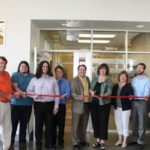 John Fitch is an Engineer, Space Physicist, and inventor. He has lived with his family in Waco since 1994. John founded Birkeland Current in 2009 as a small business that develops enabling technical concepts into mature prototypes ready for business startup. Birkeland Current’s joint venture with Pruf Energy Solutions recently won the 2015 Business Innovator award from the Waco Chamber of Commerce. Birkeland Current’s offices and labs are in the Baylor BRIC. The website is www.birkelandcurrent.com.
John Fitch is an Engineer, Space Physicist, and inventor. He has lived with his family in Waco since 1994. John founded Birkeland Current in 2009 as a small business that develops enabling technical concepts into mature prototypes ready for business startup. Birkeland Current’s joint venture with Pruf Energy Solutions recently won the 2015 Business Innovator award from the Waco Chamber of Commerce. Birkeland Current’s offices and labs are in the Baylor BRIC. The website is www.birkelandcurrent.com.
The Act Locally Waco blog publishes posts with a connection to these Aspirations for Waco. If you are interested in writing for the Act Locally Waco Blog, please email [email protected] for more information.
By Sandra Arias
I’ve always had large ambitions of traveling to new places. When I first heard that I would be heading to Nashville, Tennessee for the National League of Cities Conference I knew that I was in for a great time.
For the past two years I have served on the Waco City Youth Council, an organization dedicated to helping the youth of Waco become more active in the community. Within this organization I have been a part of many wonderful projects such as fundraising for the Waco Humane Society and donating gifts to some of the five hundred foster children in McLennan County. Annually, the Waco City Youth Council, along with the Waco City Council, travels to the National League of Cities Conference. Delegates from across the country meet at this conference every year to discuss local issues, and hear from speakers who have made a great impact in their communities.
 This year I, along with five other students from Waco, attended this conference as youth delegates. Never in my life had I left the state of Texas, let alone been on a plane, and for me to travel to the country music capital was inconceivable. There are not enough words to express the excitement I felt. Weeks prior to our departure my good friend and fellow delegate, Kristen Petree, and I spent our time planning everything we wanted to do when we landed in Nashville. However, to actually be in the city was a breathtaking experience.
This year I, along with five other students from Waco, attended this conference as youth delegates. Never in my life had I left the state of Texas, let alone been on a plane, and for me to travel to the country music capital was inconceivable. There are not enough words to express the excitement I felt. Weeks prior to our departure my good friend and fellow delegate, Kristen Petree, and I spent our time planning everything we wanted to do when we landed in Nashville. However, to actually be in the city was a breathtaking experience.
On November 2, 2015 we departed for Nashville, Tennessee. As we landed in the grand city, it was very clear that it was a vibrant place filled with great energy. On our first day we made our way to the Music City Center, one of the largest convention centers in the country and got a first glimpse of the convention. Thousands of people gathered in this large building, spanning the length of five city blocks, for the sole purpose of finding ways to improve their city. We also met with several other youth delegates from all around the country. What was astounding to me was that so many of these young adults, like myself, cared very much about their community. One of the major highlights of this trip was hearing Vice President Joe Biden speak. In his speech he highlighted the importance of small businesses, and the vital necessity of city infrastructure to bring in companies that could provide jobs for our citizens. Within our small  city of Waco, I believe that we truly embrace the words of Vice President Biden. In Waco, we embrace our small businesses with the hope that our citizens will prosper. We have also done well by providing the infrastructure needed to house large companies such as M&M Mars, which employs many people in the area.
city of Waco, I believe that we truly embrace the words of Vice President Biden. In Waco, we embrace our small businesses with the hope that our citizens will prosper. We have also done well by providing the infrastructure needed to house large companies such as M&M Mars, which employs many people in the area.
During the rest of my stay in Nashville I enjoyed a variety of other things. Our group had plans to consult with various companies about their proposals for developing our city. We met with council member Alice Rodriguez on several occasions to discuss with her all that we had seen and heard. The Nashville youth delegates gave us a tour of the city and its historic sites. We were also treated to a private concert by some of Nashville’s up and coming artists.
Overall, my journey to Nashville was spectacular. I was able to meet many great people who provided me an outsider’s perspective of my wonderful city. I am very grateful to the Waco City Council, as well as the Waco City Youth Council for allowing me to attend this wonderful trip. In the end, I learned about many ways to improve my community, and I plan to employ what I learned to help our community prosper.
Do you know a young person who might be interested in Waco Youth Council? The Waco Youth Council’s primary function is to provide the Waco City Council a teen perspective on issues facing the City, and to provide a voice for teens in the community. The group typically volunteers at functions such as the annual Feast of Sharing, Brazos River Cleanups, and at community center events such as Easter Egg Hunts and Halloween carnivals. Applications are available from high school counselors, or by emailing Earl Stinnett at [email protected]. The deadline to apply is Thursday, April 21, 2016. <Youth Council Application> <Youth Council Information Sheet>
 Sandra Arias is a senior at Waco High School, with plans to attend the University of Texas at Arlington this fall. She will major in science and exercise, and hopes to earn her Master’s degree in athletic training. She is very involved in Waco High’s student athletic training program, and has also been a part of Waco High’s cross country, track, and Lady Lion soccer teams.
Sandra Arias is a senior at Waco High School, with plans to attend the University of Texas at Arlington this fall. She will major in science and exercise, and hopes to earn her Master’s degree in athletic training. She is very involved in Waco High’s student athletic training program, and has also been a part of Waco High’s cross country, track, and Lady Lion soccer teams.
By Ashley Bean Thornton
My mom worked so hard on me! My whole childhood was a series of experiments to see if she could instill in me what she called “social graces.” One of her failed experiments was dance lessons. Ugh! When I was seven or eight she signed me up for tap and – double ugh! – ballet. I had no sense of rhythm and I couldn’t really tell my right from my left…hopeless!
Fast forward 45 years or so. My friend Shirley Langston tells me she is starting a Dance Troupe. (I suppressed an “Ugh.”) Miss Shirley runs Restoration Haven, a ministry in the Estella Maxey Complex. She was going to partner with Joy’s School of Dance to provide dance lessons for “her girls” who lived there in the public housing. Really? I thought. Wasn’t there something more important she could be doing for those girls? Maybe something having to do with school work or computers? She was so excited about it though, that despite my prejudice against dance lessons, I accidentally caught some of her enthusiasm.
She named the troupe “Miriam’s Army.” I went to one of their first recitals, a Christmas show complete with red-nosed reindeer and Angels. Since that early show a year or two ago, Miriam’s Army has performed at Juneteenth celebrations, the Waco Cultural Arts Festival, and no telling how many other events around town. Last week I saw them perform at the NAACP 80th Anniversary Gala. They stole the show dancing their hearts out to “Baby Love” and “Heat Wave” among other familiar favorites. When they finished, the crowd jumped to their feet and gave them a long, loud standing ovation.

Four dancers from Miriam’s Army visit with School Board President, Pat Atkins. (Photo bombing mom in the background!)
After their moment in the spotlight, the dancers marched back to the tables reserved for them and sat through the rest of the banquet program. It was a fine program, but I can’t imagine it was terribly interesting to a bevy of tween-age and teen-age girls. They sat through it though, with just the occasional restless tapping of their still tap-clad toes, minding their manners and politely pretending to listen. When the event was over, I noticed four of them walk up to WISD School Board President Pat Atkins, introduce themselves, and engage in a some pleasant after-dinner conversation.
Here’s what occurred to me as I watched the four young girls in fringed, sequined dresses with peacock feathers in their hair carry on a conversation with the school board president: These young ladies are learning some social graces!
“Social Graces,” it turns out, is code for “basic stuff you need to know to pave the way for yourself in the big, wide world.” The girls in Miriam’s Army are learning things like being on time to get on the van to go to practice, keeping up with their gear, and working on something they are not good at until they get good at it. They are learning to smile even when they are nervous. They are learning how to sit still during a speech even though it’s boring, how to manage at least the basic etiquette involved in a banquet, and how to introduce themselves and have a polite conversation with a grown-up person they don’t really know. Would I be able to have the job I have now, the life I have now, if I hadn’t learned these kinds of things somewhere along the way?
Being a part of Miriam’s Army is about more than sequins and Motown. It’s about life. Dance team isn’t just a fun, frivolous “extra” that successful people can afford to provide for their children; dance team (and other similar opportunities) is where those children learn how to become successful people.
I did manage to pick up some “social graces” along the way, and they are so automatic to me now that it feels like I was born knowing them. But, I wasn’t. I learned them somewhere – if not in dance lessons, then at speech tournaments, or in choir, or drama or some other opportunity that I probably took for granted at the time. You can’t learn all these kinds of lessons in a classroom. You learn them by doing something that requires you to perform in public, something that exposes you to new social situations and requires you to meet new and different kinds of people. When you think about it, children who miss out on these kinds of opportunities are missing a crucial part of their education — just as if they had missed the week in school when you learn about percentages. When you think about it a little longer, you realize that these kinds of opportunities cost time and money, something that the moms in Estella Maxey don’t often have in great supply.
The moms in Estella Maxey want the same thing for their daughters that my mom wanted for me. With the help of Miss Shirley and Joy’s School of Dance, more of them are able to provide their girls opportunities to develop the “social graces.” We should all want that for these girls. The confident tap-dancers who are introducing themselves to the school board president now will be the confident young women who are introducing themselves to college admissions officers and employers in the very near future. We all benefit if they are successful!
Would it give you joy to help support this ministry? A dance troupe requires dance outfits. Miriam’s Army saves money by purchasing their outfits second hand. They purchase three outfits every spring, one each for ballet, tap and Hip-Hop. Their invoice for outfits this year is around $3,000. The girls and moms have worked really hard selling popcorn and raffle tickets in addition to paying a hard-won $25 registration fee. They have raised over $1,000; they need to raise about $2,000 more. Contributions designated for Miriam’s Army can be sent to Restoration Haven, P O Box 875 Waco TX 76703 or donate on-line by clicking here: restorationhaven.org/donate.html.
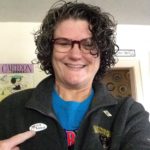 This Act Locally Waco blog post is by Ashley Bean Thornton, the Manager of the www.www.actlocallywaco.org website and the editor of the WHOLE Enchilada newsletter. The Act Locally Waco blog publishes posts with a connection to these aspirations for Waco.
This Act Locally Waco blog post is by Ashley Bean Thornton, the Manager of the www.www.actlocallywaco.org website and the editor of the WHOLE Enchilada newsletter. The Act Locally Waco blog publishes posts with a connection to these aspirations for Waco.
If you are interested in writing for the Act Locally Waco Blog, please email [email protected] for more information.
by Fred Hills
Few things are more important to the prosperity of our community than our educational systems. As citizens, it is our responsibility to keep up to date on the state of those systems, but that is sometimes difficult to do. Where can you get objective information about how well the schools systems are performing? How can a “lay” person get in depth information about some of the important decisions being made that have the potential to affect our children and our economic prospects? How can we get that information we need to be informed, responsible parents, teachers and community members when it comes to education? Fortunately, an opportunity is on the horizon to help us do just that.
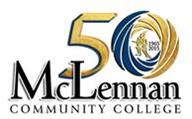 The Heart of Texas P-20 Council & Prosper Waco are cohosting this year’s State of Education in the Heart of Texas on Tuesday, April 19 from 11 AM to 1:30 PM at the McLennan Community College Conference Center. The community is invited.
The Heart of Texas P-20 Council & Prosper Waco are cohosting this year’s State of Education in the Heart of Texas on Tuesday, April 19 from 11 AM to 1:30 PM at the McLennan Community College Conference Center. The community is invited.
The forum will provide statistics and information on the progress of local educational efforts followed by panel discussions giving students, industry partners and educational leaders the opportunity to share their perspectives on education in central Texas. Prosper Waco will also share their ongoing efforts in bringing together collaborating partners from the greater Waco area in cooperatively addressing educational issues in our community.
We are honored to have Texas’s House Representative Jimmie Don Aycock as our lunch keynote speaker. Rep Aycock represents District 54 and currently serves as the chair of the Public Education Committee and a member of the Defense & Veterans’ Affairs Committee. He will share his perspectives on educational policy in Texas.
The agenda is as follows:
- 11:00-11:10 a.m.: Introduction by Fred Hills, Heart of Texas P-20 Council and Matthew Polk, Executive Director of Prosper Waco
- 11:10-11:30 a.m.: Presentation: Statistics of Education in the Heart of Texas
- 11:30-11:50 a.m.: Industry Panel Discussion
- 11:50-12:10 p.m.: Student Panel Discussion
- 12:10-1:00 p.m.: Lunch & Keynote Speaker, Rep. Jimmie Don Aycock
- 1:00-1:30 p.m.: Updates from the Heart of Texas P-20 Council and Prosper Waco
Registration cost is $15 which includes lunch. All are invited and welcome to register at Region 12 ESC’s website txr12.escworks.net/catalog/search.aspx, Session #88565. If you have any questions about the forum, contact either Fred Hills at [email protected] or Chris Holecek at [email protected].
 Dr. Fred Hills is the current president of the HOT P-20 and Dean of Arts, Science and Business at McLennan Community College. He has worked and lived in the Waco community for over 20 years and has served on the HOT P20 for the last four years.
Dr. Fred Hills is the current president of the HOT P-20 and Dean of Arts, Science and Business at McLennan Community College. He has worked and lived in the Waco community for over 20 years and has served on the HOT P20 for the last four years.
By Rachel Toombs
(Note: This piece was originally published on Manyhorizons.com. )
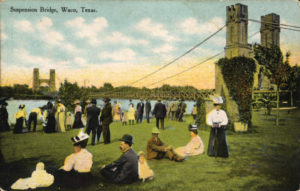 100 years ago, two miles from where my house now stands, seventeen-year-old Jesse Washington was lynched just outside the courthouse in downtown Waco, Texas.[1] What came to be deemed nationally as “The Waco Horror” was caught through gruesome images of Washington’s charred body hanging from a tree with a crowd of thousands in their Sunday-best encircling the scene. One of these images (warning: this image is graphic) captures the face of a young man smiling a benign smile that could just as well be made in a school photograph or at the sight of one’s crush on a first date. The smiling young man beams out from the bottom right corner of the image. Just to the left of him, there is a tree and hanging from it is the barely recognizable remains of a man.
100 years ago, two miles from where my house now stands, seventeen-year-old Jesse Washington was lynched just outside the courthouse in downtown Waco, Texas.[1] What came to be deemed nationally as “The Waco Horror” was caught through gruesome images of Washington’s charred body hanging from a tree with a crowd of thousands in their Sunday-best encircling the scene. One of these images (warning: this image is graphic) captures the face of a young man smiling a benign smile that could just as well be made in a school photograph or at the sight of one’s crush on a first date. The smiling young man beams out from the bottom right corner of the image. Just to the left of him, there is a tree and hanging from it is the barely recognizable remains of a man.
It would be easy to stand apart from the appalling joy of this young man before such a horror. Evil is always easier to swallow when we are able to stand apart. It is a bit harder to stand apart when the evil occurred right down the street, but not all that hard. When I asked a class of undergraduates who also live just a couple miles from the Waco Horror if they knew the name Jesse Washington, not one hand was raised. Not one. It is easy to stand apart from evil, even when it occurred right down the street unless you are on the receiving end of those evil acts.
It is worth taking a moment to state the obvious: those in positions of societal privilege are much less likely to recognize the evil in our midst and in ourselves. This is a kind privileged ignorance. When we find ourselves among the lynching crowd and not the lynched, the horror can be lost on us. And often is, as can be seen in the indelicacy of the proclamation that “all lives matter,” when it is the black body that is treated as though it matters less than a white one.
Now, our ability to stand apart is, of course, unsurprising. For “the heart really is deceitful above all things and beyond cure. Who can understand it?”[2] When I look at that picture of the young man in a crisp white shirt, I cannot understand it. When I allow myself to consider for that terrifying moment how I ignorantly and willfully participate in my own forms of perpetuating even delighting in evil, I cannot understand it. But I know it is true.
We like to see ourselves as part of the crowd that welcomed the God-Man into Jerusalem with palm branches signaling his triumphal entry into the holy city. We do not like to identify ourselves as the same crowd later that week who cried “Crucify him.” It is entirely fitting that often the ashes that streak our foreheads and initiate us into the Lenten season of the bruised heart are made from the ashes of the palms from Palm Sunday: behold your wickedness.
In his Summa Theologica, Thomas Aquinas notes what was accomplished in Christ’s Passion: “As Christ’s slayers were men, so also was the Christ slain. Now the charity of the suffering Christ surpassed the wickedness of His slayers. Accordingly Christ’s Passion prevailed more in reconciling God to the whole human race than in provoking Him to wrath.”[3] We are Christ’s slayers. Our wickedness is not minimized in the Passion event. Instead, Thomas emphasizes that Christ’s charity, his love, surpasses our wickedness. Our wickedness, seen not only in the mob that cried out “Crucify him” two thousand years ago but throughout the centuries and in my case down the street, must not be forgotten if we want to do justice to the Christ event. We can only grasp the profundity that Love came down, becoming one of us, being crucified by us, and raising both himself and us from the curse of death if we behold our wickedness that God’s love surpassed.
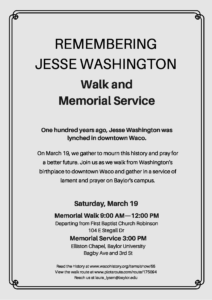 March 19 – REMEMBERING JESSE WASHINGTON: Memorial Walk and Service – On March 19, we come together as the communities and churches of Waco to mourn our history and pray for a better future. Join us as we walk in visible remembrance from Washington’s birthplace to downtown Waco and gather in a service of lament and prayer on Baylor’s campus. For more information, contact [email protected]. Read the history at www.wacohistory.org/items/show/55 or view the walk route (subject to revision) at www.plotaroute.com/route/175094. FLYER.
March 19 – REMEMBERING JESSE WASHINGTON: Memorial Walk and Service – On March 19, we come together as the communities and churches of Waco to mourn our history and pray for a better future. Join us as we walk in visible remembrance from Washington’s birthplace to downtown Waco and gather in a service of lament and prayer on Baylor’s campus. For more information, contact [email protected]. Read the history at www.wacohistory.org/items/show/55 or view the walk route (subject to revision) at www.plotaroute.com/route/175094. FLYER.
 Rachel Toombs is a third-year theology doctoral student in the Religion Department at Baylor University. She moved to Waco from Vancouver, BC, where she completed her MA in Old Testament. Before she started her graduate studies, she worked with at-risk youth in Minneapolis. Her academic interest is in the theological style of narrative, specifically in the Old Testament and contemporary literature. She lives in Waco with her husband and two pit-mix puppies. She is a diehard Twins fans, and remembers when the Dallas Stars were called the North Stars.
Rachel Toombs is a third-year theology doctoral student in the Religion Department at Baylor University. She moved to Waco from Vancouver, BC, where she completed her MA in Old Testament. Before she started her graduate studies, she worked with at-risk youth in Minneapolis. Her academic interest is in the theological style of narrative, specifically in the Old Testament and contemporary literature. She lives in Waco with her husband and two pit-mix puppies. She is a diehard Twins fans, and remembers when the Dallas Stars were called the North Stars.
The Act Locally Waco blog publishes posts with a connection to these aspirations for Waco. If you are interested in writing for the Act Locally Waco Blog, please email [email protected] for more information.
[1] For a more detailed accounts (warning: contain graphic images): http://www.wacohistory.org/items/show/55, http://www.npr.org/templates/story/story.php?storyId=5401868, https://tshaonline.org/handbook/online/articles/jcj01
[2] Jeremiah 17:9
[3] Sum IIIa. 49.4.ad.3
By Brandon Chappell
In recent days, I have been trying to find out what the perception of Texas State Technical College is from the students in the community, and I have been totally surprised at what I’ve heard. One student told me that he was under the impression that TSTC was strictly a place you go to when you want to work on cars. Another student told me that she wasn’t aware that females could even attend TSTC. Neither of these statements is true. TSTC offers a wide variety of associate degrees and certificates for both men and women and is considered by many as one of Waco’s best kept secrets.
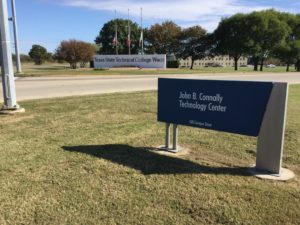 TSTC, formerly known as TSTI has been a part of educating and preparing students for the workforce in Waco for over 50 years. With an array of programs such as Gaming, Programming, Welding, Laser Optics, Building Construction, Culinary Arts, Web Design and many others TSTC, offers hands on education and experience locally at a very affordable price. All of the instructors at TSTC have experience working in their particular fields, so the knowledge and wisdom they offer the students is invaluable.
TSTC, formerly known as TSTI has been a part of educating and preparing students for the workforce in Waco for over 50 years. With an array of programs such as Gaming, Programming, Welding, Laser Optics, Building Construction, Culinary Arts, Web Design and many others TSTC, offers hands on education and experience locally at a very affordable price. All of the instructors at TSTC have experience working in their particular fields, so the knowledge and wisdom they offer the students is invaluable.
A lecture-style class is not for everyone and at TSTC, we appreciate and value a hands-on teaching environment. Aside from the instructors themselves, there are many services TSTC offers that help our students successfully graduate and find a job in their field. There are scholarships and grants that students can apply for to help pay for tuition and books. The students have access to Success Coaches, who are the academic advisors available 5 days a week to help students navigate any obstacles that comes between them and graduation.
Another service TSTC offers to students is the Project Link Program. Project Link is a program administered by Prosper Waco at TSTC and MCC that allows the students who are members of the program at La Vega High School and University High School to have their own personal Success Coach. My name is Brandon Chappell and I am the Project Link Liaison at TSTC. I help prospective Project Link students who are interested in enrolling in TSTC in the future with information about testing, admissions and other requirements dealing with pursuing a degree or completing a certificate program. If the Project Link students have any problems or concerns dealing with being successful at TSTC, I am their “go-to guy.” I offer a one-on-one mentoring environment, and access to the same support services that the other Success Coaches have, but I am given the opportunity to concentrate on a much smaller number of students and build on a level of familiarity with the students from the high school level.
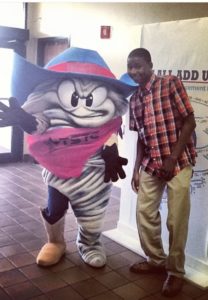 Come check out the TSTC Waco campus. Take a tour of some of the different departments and find out what program works for you. TSTC isn’t just for recent high school graduates; many of our students have been in the working world for several years before enrolling at TSTC. Most of our programs take 5 semesters or less to complete. If you’re not interested in earning a college degree, TSTC also offers certificate programs that can teach you the basic skills in many different trades so that you can broaden your horizons or make yourself more marketable in the workforce.
Come check out the TSTC Waco campus. Take a tour of some of the different departments and find out what program works for you. TSTC isn’t just for recent high school graduates; many of our students have been in the working world for several years before enrolling at TSTC. Most of our programs take 5 semesters or less to complete. If you’re not interested in earning a college degree, TSTC also offers certificate programs that can teach you the basic skills in many different trades so that you can broaden your horizons or make yourself more marketable in the workforce.
At TSTC our goal is to prepare our students for gainful employment, and we have an amazing placement rate. Ultimately the goal is to get our students out into the real world with the necessary job training and skills that it takes to work in many different industries.
The job market has been getting increasingly more competitive and TSTC can help even the playing for field or place you at the front of the hiring race. To find out more information about TSTC, visit www.tstc.edu or head over to the campus between 8-5 and one of our recruiters will be happy to give you a tour or answer any questions you may have.
 Brandon Chappell was raised in Houston, TX, but his roots are here in Waco. Most of his family were born here in Waco and graduated from local high schools. He attended Prairie View A&M University as a first generation college student. He graduated from PVAMU in 2012 with a Bachelor’s in Communication, and became the first male in his family to be awarded a college degree. He has been employed with Texas State Technical College since 2012 in several different positions and enjoys using his experiences to assist the students with being successful during their time in college.
Brandon Chappell was raised in Houston, TX, but his roots are here in Waco. Most of his family were born here in Waco and graduated from local high schools. He attended Prairie View A&M University as a first generation college student. He graduated from PVAMU in 2012 with a Bachelor’s in Communication, and became the first male in his family to be awarded a college degree. He has been employed with Texas State Technical College since 2012 in several different positions and enjoys using his experiences to assist the students with being successful during their time in college.
The Act Locally Waco blog publishes posts with a connection to these aspirations for Waco. If you are interested in writing for the Act Locally Waco Blog, please email [email protected] for more information.

